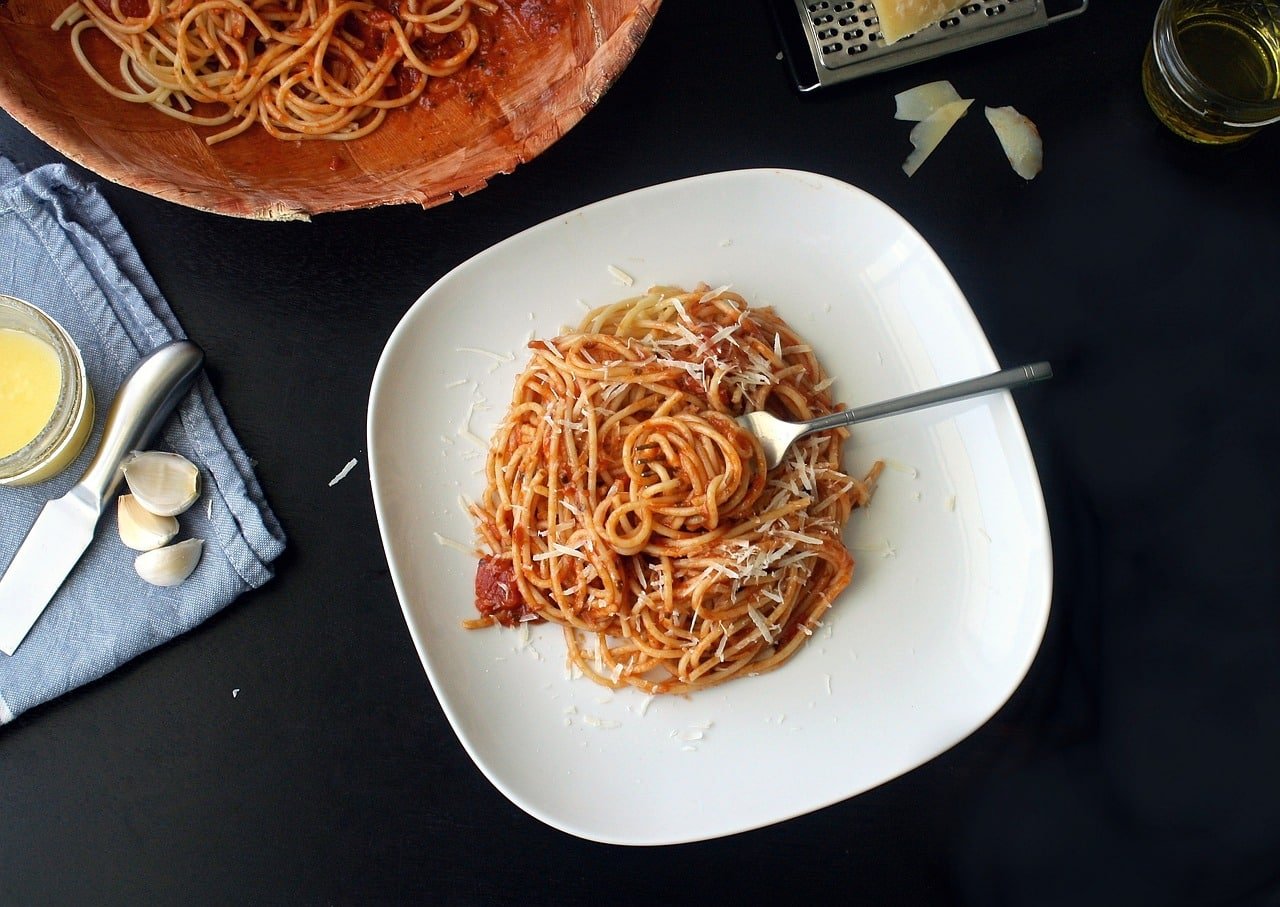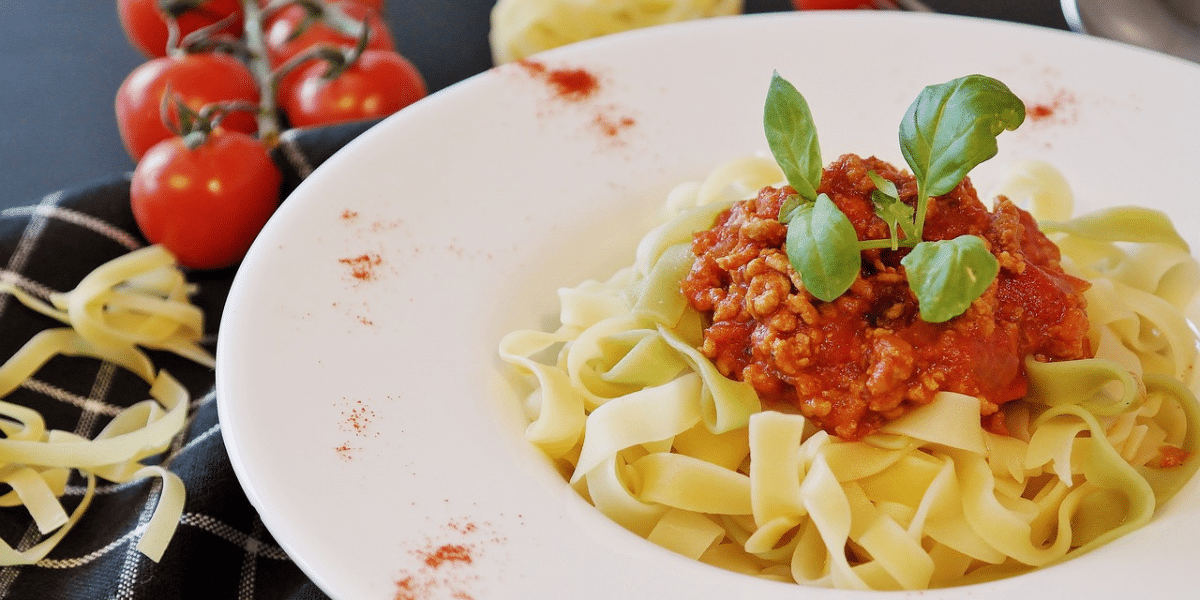Gluten-Free Pasta has emerged as a culinary hero for those looking to avoid gluten. Whether due to celiac disease, gluten sensitivity, or personal health goals, this alternative has gained popularity for its ability to blend seamlessly into traditional pasta dishes.
Embracing the Gluten-Free Pasta Movement

The rise of gluten-free eating has been a game-changer in the food industry. Gluten-Free Pasta, in particular, has become a lifeline for those with celiac disease or gluten intolerance. Organizations like the Celiac Disease Foundation have been pivotal in increasing awareness and availability of gluten-free options.
Ingredients and Varieties
When it comes to Gluten-Free Pasta, the base ingredients are crucial. The Whole Grains Council lists several suitable grains that are naturally free of gluten and perfect for pasta-making:
Choosing the Right Ingredients
When making Gluten-Free Pasta, selecting the right ingredients is crucial. These ingredients are naturally gluten-free and offer a wide variety of options:
- Rice Flour: Rice flour is a common choice due to its neutral flavor and similarity to traditional pasta.
- Corn Flour: Corn flour adds sweetness and imparts a vibrant yellow color to your pasta.
- Quinoa: Quinoa is a protein-rich grain that lends a hearty, nutty flavor to Gluten-Free Pasta.
Diversity in Gluten-Free Choices
The diversity of these ingredients allows for a wide range of Gluten-Free Pasta varieties. Each grain brings its unique taste and texture, offering an array of options for your pasta dishes.
Creating Gluten-Free Pasta
Crafting Gluten-Free Pasta involves combining these grains with skillful culinary techniques. Let’s explore how to create delicious pasta that’s free from gluten.
These ingredients are carefully chosen not only for their absence of gluten but also for their ability to deliver a pasta experience that satisfies all the senses.
Mastering the Art of Gluten-Free Pasta

Crafting pasta that excludes gluten requires a harmonious mix of select flours and adeptness in culinary methods. For culinary enthusiasts eager to refine their skills in preparing such pasta varieties, OmegaRecipes offers a thorough tutorial on navigating the nuances of pasta preparation without gluten, replete with insightful tips and scrumptious recipes.
Enhancing the Flavor
To truly enjoy Gluten-Free Pasta, the right seasonings and sauces are key. Our guide on flavoring gluten-free pasta offers a treasure trove of ideas to enhance the natural flavors of your pasta dishes.
Choosing the Right Seasonings
Selecting the perfect seasonings for your Gluten-Free Pasta is essential. Here are some tips on how to make your pasta dishes even more flavorful:
Herbs and Spices: Experiment with a variety of herbs and spices to add depth and aroma to your Gluten-Free Pasta.
Garlic and Onions: Sautéing garlic and onions in olive oil can create a savory base for your pasta sauce.
Fresh Ingredients: Use fresh ingredients like ripe tomatoes, basil, and parsley for a burst of natural flavor.
Sauces and Toppings
The sauce you choose can greatly enhance the taste of your Gluten-Free Pasta. Here are some ideas:
Tomato Sauce: A rich tomato sauce can add tanginess and richness to your pasta.
Olive Oil Dressing: A light olive oil dressing can bring out the natural flavors of the pasta and ingredients.
Parmesan Cheese: Grated Parmesan cheese can be the perfect finishing touch, adding a savory and salty kick to your dish.
Experiment and Enjoy
Don’t be afraid to experiment with different combinations of seasonings and sauces to find the perfect flavor profile for your Gluten-Free Pasta. Enjoy the culinary journey!
The Nutritional Advantages of Gluten-Free Pasta
Choosing Gluten-Free Pasta can often lead to a meal that’s not only safe for those with gluten restrictions but also healthier. These pasta options are frequently made from whole grains, providing a rich source of fiber and nutrients. Yet, it’s always wise to check labels for any hidden sugars or additives.
Nutrient-Rich Choices
Gluten-Free Pasta offers various health advantages when compared to traditional pasta:
Whole Grain Goodness: Many Gluten-Free Pasta options are crafted from whole grains, providing essential nutrients and fiber.
Reduced Gluten Load: By eliminating gluten, these pasta alternatives can be gentler on the digestive system for those with sensitivities.
Low Glycemic Index: Some Gluten-Free Pasta varieties have a lower glycemic index, which can help stabilize blood sugar levels.
Mindful Label Reading
While Gluten-Free Pasta can offer nutritional benefits, it’s essential to read labels carefully. Look out for hidden sugars or additives that may affect the overall healthiness of your pasta choice.
Balanced and Nourishing
When prepared with fresh, wholesome ingredients and paired with nutritious sauces and toppings, Gluten-Free Pasta can be a balanced and nourishing addition to your diet.
Pairing Gluten-Free Pasta with the Perfect Sauce
Finding the right sauce to complement this recipe can transform your meal. Whether it’s a rich tomato sauce or a light olive oil dressing, the correct pairing is essential. For a flavorful and hearty option, our pasta minced meat recipe is an excellent choice.
The Art of Sauce Selection
When it comes to Gluten-Free Pasta, choosing the right sauce is essential. Let’s explore different sauce options and how they can elevate your pasta dishes.
Tomato-Based Sauces
Tomato-based sauces are a popular choice for Gluten-Free Pasta. They add a tangy and rich flavor that complements the pasta’s texture. Consider marinara, pomodoro, or a hearty bolognese sauce.
Olive Oil and Herb Dressings
For a lighter option, olive oil-based dressings infused with herbs and spices can enhance the natural flavors of your Gluten-Free Pasta. Drizzle your pasta with extra-virgin olive oil and toss it with fresh basil, garlic, and grated Parmesan cheese.
Creamy Sauces
Creamy sauces like Alfredo or carbonara can provide a velvety texture and a rich taste to your pasta. You can make these sauces using gluten-free ingredients like cornstarch or rice flour to thicken them.
Pesto and Herb Blends
Pesto sauce, made from basil, pine nuts, Parmesan cheese, and olive oil, can add a burst of fresh and herby flavor to your Gluten-Free Pasta. Experiment with different herb blends to create your unique sauce.
Customizing Your Sauce
Feel free to customize your sauce by adding vegetables, proteins, or spices to suit your taste preferences. Whether you prefer a simple sauce or a complex medley of flavors, the right sauce can transform your Gluten-Free Pasta into a delightful culinary experience.
Frequently Asked Questions (FAQs)
1. What are the main ingredients in Gluten-Free Pasta?
Gluten-Free Pasta is typically made from ingredients like rice flour, corn flour, or quinoa. These grains are naturally free of gluten and serve as the base for this pasta. They’re chosen for their neutral flavors and ability to mimic traditional pasta. Some gluten-free pasta varieties may also incorporate legume flours or potato starch for added texture.
In simpler terms: Gluten-Free Pasta is made from grains that don’t have gluten, like rice or corn. These grains are chosen because they taste mild and feel like regular pasta. Sometimes, other ingredients like legume flours or potato starch are used to make the pasta even better.
2. Is Gluten-Free Pasta a healthier choice?
Gluten-Free Pasta can be a healthier choice for some people. It often contains whole grains, which are good for you because they have lots of fiber and nutrients. But, it’s important to check the labels to make sure there are no hidden sugars or unhealthy additives in the pasta.
In simpler terms: Gluten-Free Pasta can be healthy because it’s made from whole grains with fiber and nutrients. Just make sure to check the label for any bad stuff like sugar or extra things you don’t want.
3. How can I make my Gluten-Free Pasta taste better?
To make your Gluten-Free Pasta more delicious, you can try adding herbs, spices, or garlic for extra flavor. Using a tasty sauce, like tomato or olive oil with herbs, can also make it yummier. Don’t be afraid to experiment and find the flavors you like best.
In simpler terms: To make your Gluten-Free Pasta tastier, you can add herbs, spices, or garlic. Using a good sauce, like tomato or olive oil with herbs, can make it even better. Try different things to see what you like!
4. Can I pair Gluten-Free Pasta with any sauce?
Yes, you can pair Gluten-Free Pasta with many types of sauce. Tomato-based sauces, creamy sauces, and pesto are great choices. You can also customize your sauce by adding vegetables or proteins to match your taste. Just be sure the sauce doesn’t have gluten if you’re trying to avoid it.
In simpler terms: You can use lots of different sauces with Gluten-Free Pasta, like tomato or creamy sauces. You can even make your own sauce with veggies or meat. Just make sure the sauce is gluten-free if that’s what you want.
Conclusion
Embracing the world of alternative grains brings a refreshing twist to the traditional pasta experience. This shift is more than a nod to dietary needs; it’s a celebration of diversity in our diets. With an array of grains and countless recipes at your disposal, the journey into pasta dishes that cater to all kinds of dietary restrictions is not just necessary but also a delightful culinary adventure. Whether for health reasons or simple curiosity, the exploration of these dishes is sure to enrich your cooking repertoire and tantalize your taste buds.

